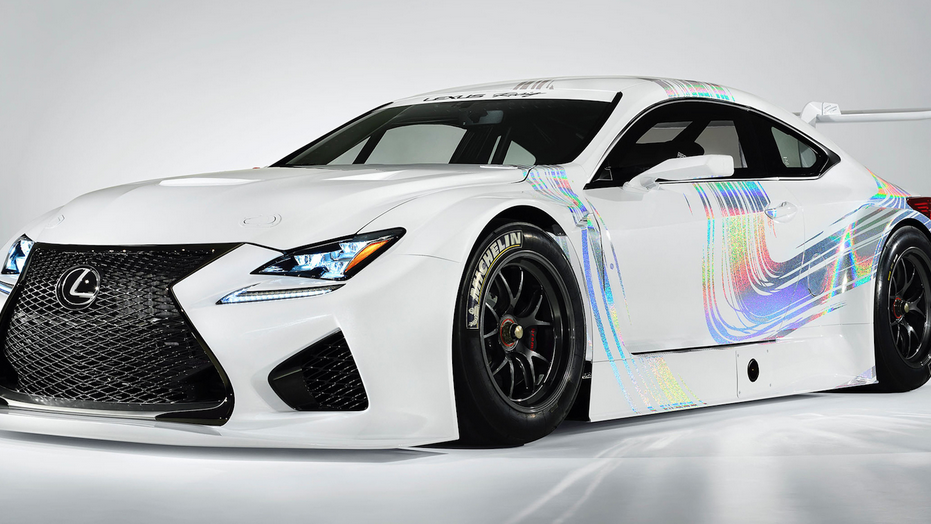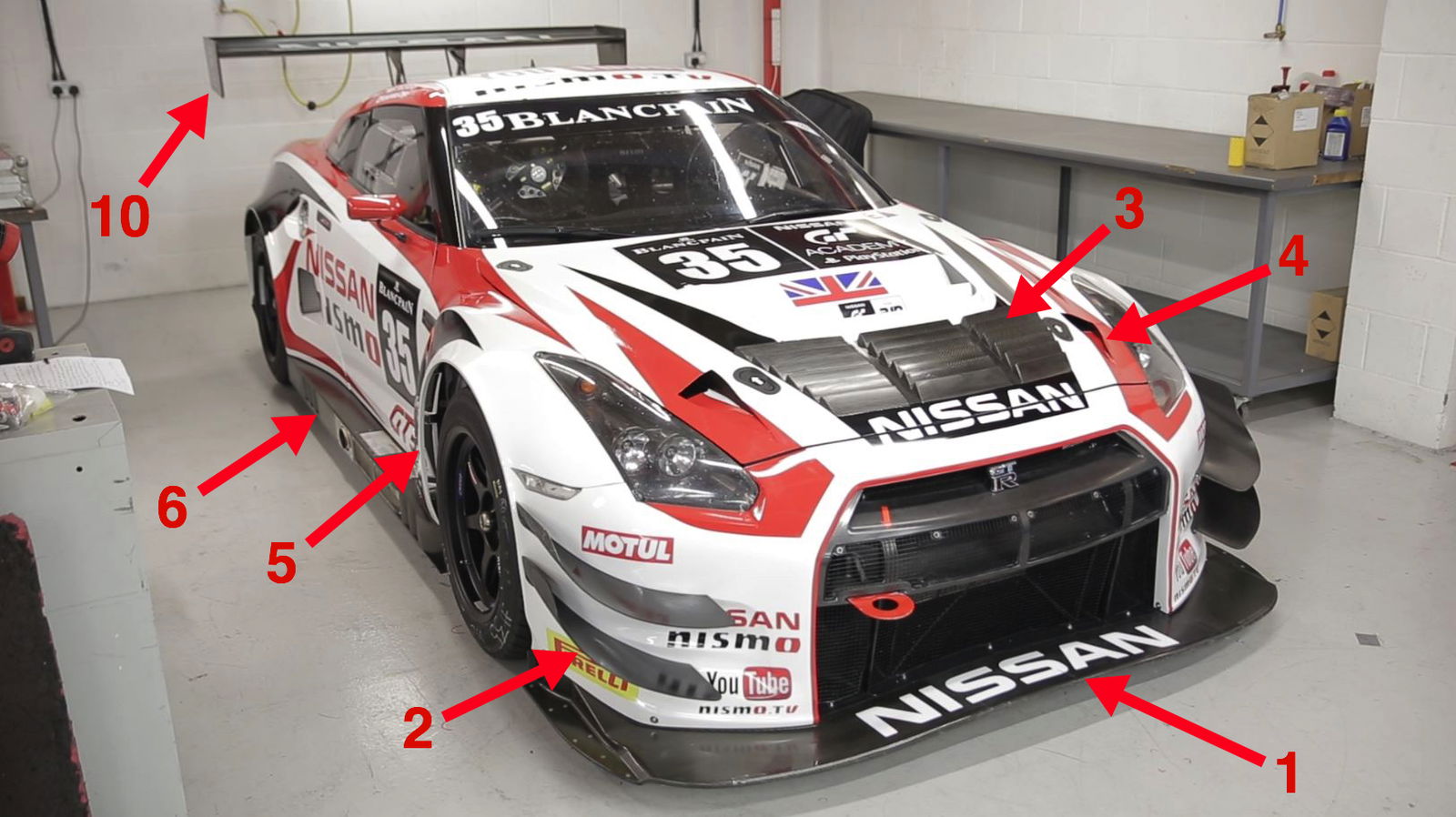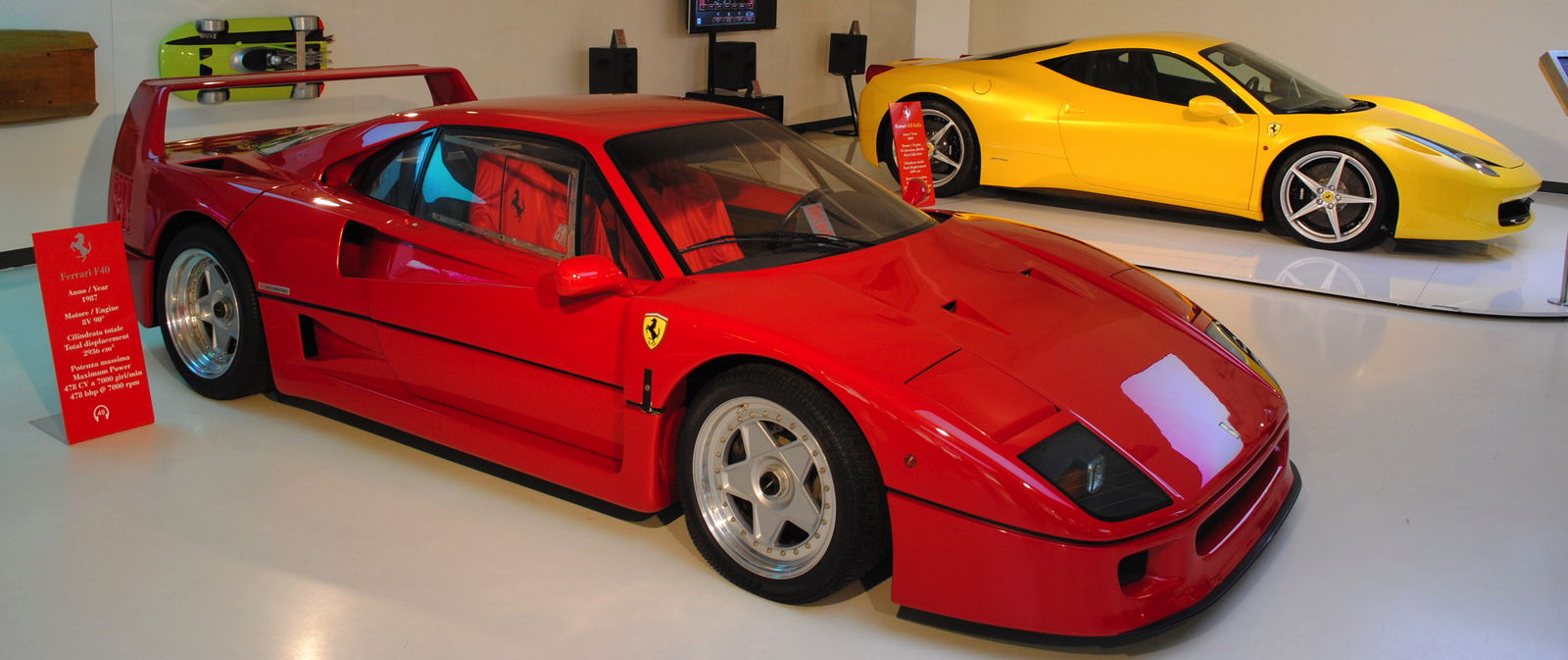Engineering Explained: 10 Aerodynamic Features Of Race Cars

1. Splitter
A leading edge on the front of the car, relatively parallel to the ground, which attempts to keep high pressure air on top of the car, rather than flowing underneath it. The high pressure pushes down on the splitter, also helping to create downforce.
2. Dive Planes
These fixtures are typically located on the right and left sides of the front bumper (see below), and are curved to redirect airflow at the front of the vehicle upward, thus creating downforce. They’re also used to alter the airflow along the sides of the vehicle, attempting to minimise the amount of high pressure air that enters underneath the car (which would create lift/minimise downforce).
3. Hood Vents
Ventilated hoods allow for a clean exit for the air passing through the radiator, and they also help to maintain airflow through the engine bay, increasing cooling.

4. NACA Ducts
These air scoops are designed to have minimal impact on airflow, while still creating an inlet for airflow. They can be used in nearly any application that requires airflow, whether that’s feeding an air intake, a radiator, or even cooling for a driver. The Ferrari F40 made extensive use of NACA ducts.

5. Side Vents
Side vents can be seen behind the front (or rear) wheels, allowing for airflow to exit the wheel wells which typically remains turbulent from the rotation of the wheels. These can also be used to channel hot air out from the engine bay.
6. Side Skirt
Side skirts are somewhat similar in principle to splitters. They are in place, and typically as low as possible, in order to prevent high pressure air from moving underneath the vehicle.
7. Underbelly
For racing, these are often smooth and flat to minimise drag and reduce turbulence underneath the vehicle. In combination with the diffuser, the lower pressure air under the vehicle can create significant downforce.
8. Diffuser
A diffuser is a portion of the underbody which is shaped to create a location of increasingly larger air volume below the rear of the car. This allows for fast-moving low pressure air underneath the car to decelerate and expand at the rear of the vehicle. The diffuser helps to accelerate the air underneath the car which reduces its pressure, thus improving downforce. It can also help redirect the airflow upward, further improving downforce.
Here’s a quick video on how diffusers work:
9. Spoiler
Not to be confused with a rear wing, spoilers on race cars are used to prevent lift by placing an obstruction in the path of lift-creating airflow. This causes the path of the air to change, so that the airflow at the rear of the vehicle leaves in a horizontal or upward manner, thus not producing lift. A similar feature can be seen when you’re on a passenger plane that’s landing. Flaps on the wings (spoilers) will lift, minimising lift and creating drag, both of which assist in slowing the plane down.
Here’s a video explaining spoilers and rear wings:
10. Rear Wing
For automotive use, wings (much like on planes) are airfoils, however they are designed to directly deflect airflow upwards, pushing down on the vehicle. Airflow interacting with the wing is forced up, so the vehicle is forced down. However, the benefit of downforce comes at the expense of additional drag.
Here’s a video exploring these features further on the Nissan GT-R Nismo GT3.
Comments